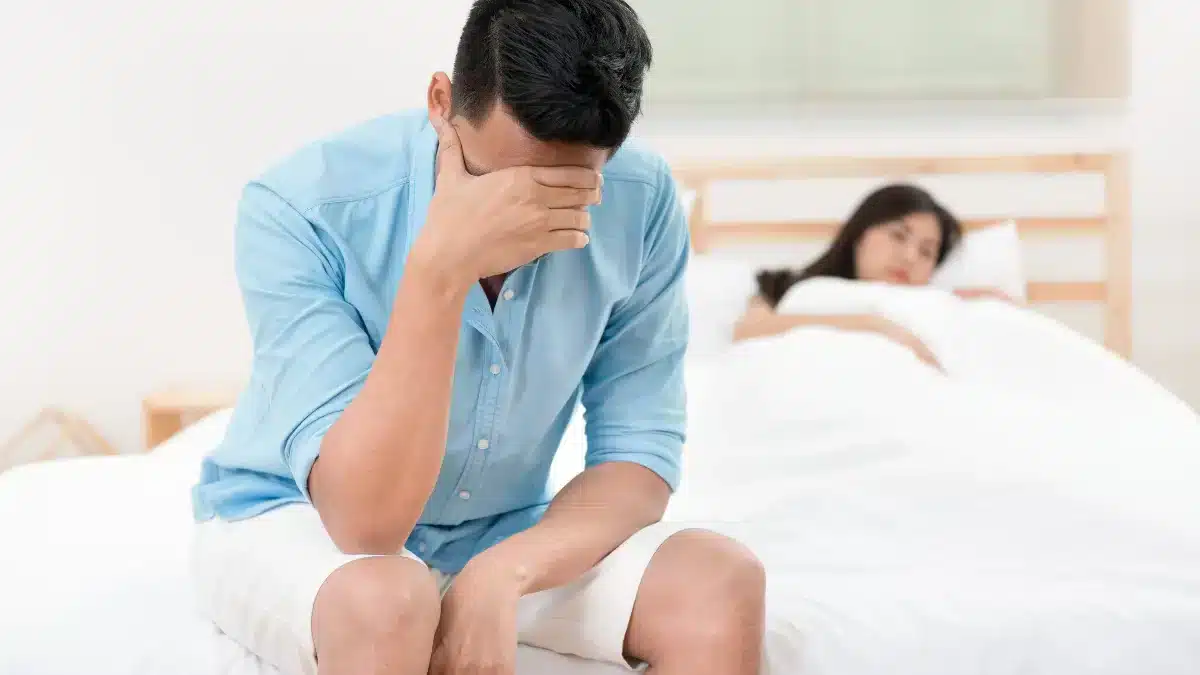Sexual Aversion Disorder: Understanding the Syndrome and its Management
Sexual Dysfunction and disorders are a serious concern. Yet, a few of them, like Sexual Aversion Disorder, are not discussed enough.
According to a study by the NCBI, 21.15 percent of males and 14 percent of females had one or more sexual disorders.
Out of these, some can be Sexual Aversion Disorder, but it is hard to predict the right number.
Such lack of statistics and research on Sexual Aversion Disorder is due to its similarity with other sexual disorders like Hypoactive Sexual Desire Disorder (HSDD).
This article provides a detailed analysis of Sexual Aversion Disorder to raise awareness and promote efficient management of the disorder.
What is Sexual Aversion Disorder
Sexual Aversion Disorder is a syndrome that is the lack of interest or arousal in sexual activities.
It involves reluctance, fear, disgust, or Anxiety to have genital contact with a partner.
Sometimes, it may even be a dislike towards other touches like hugs or holding hands.
It can also occur in combination with other Sexual Dysfunctions or their symptoms.
Prevalence of Sexual Aversion Disorder
Sexual Aversion Disorder in men and women may be hard to figure out because of its similarities with issues like Anxiety or other sexual disorders.
This disorder was earlier listed as one of two Sexual Desire Disorders in the DSM.
DSM stands for Diagnostic and Statistical Manual of Mental Disorders. It is a reference book about mental health and brain-related disorders and conditions.
However, later it was removed from DSM-5 due to a lack of research.
The prevalence of Sexual Aversion Disorder also remains mostly unknown for the same reason.
Only one study suggests a 0.37 percent prevalence of Sexual Aversion Disorder in women.
Sexual Aversion Disorder symptoms

As discussed earlier, Sexual Aversion Disorder has symptoms common with other issues.
So, it can be misleading and tough to figure out the exact issue.
Some of the symptoms of this disorder are:
- Low libido: A low sex drive due to a lack of sex hormones or stress are signs of many sexual dysfunctions, which include Sexual Aversion Disorder
- Lack of arousal: The disorder is also responsible for difficulty in getting aroused despite desire and enough stimulation when getting intimate
- Avoidance of sex: Usually, sex aversion is marked by an avoidance of genital touching with a partner. However, sometimes, it can even be a reluctance to touch or even communicate about intimacy
- Anxiety: Anxiety and Sexual Aversion Disorder are related. Anxiety and other panic states can be seen as an impact of the disorder. They share so many commonalities that it is debated to be put under Anxiety disorder
To understand it in detail for efficient management, read Low Libido: Exploring its Symptoms, Causes, and Management
Sexual Aversion Disorder causes
Several factors can cause Sexual Aversion Disorders. Some of them are:
- Stress: Stress is associated with a negative impact on sex hormones and mental well-being. This can lower libido, causing a disinterest in sex
- Post-Traumatic Stress Disorder (PTSD): Sexual trauma or other traumatic events from the past can affect sexual desires. According to a study, Sexual Aversion Disorder can be indicated by a history of PTSD
- Low levels of sex hormones: Testosterone initiates sexual activities and desire. It is also essential in facilitating genital lubrication, sensation, and engorgement. So, its lack can lower interest in sex. On the other hand, low Estrogen impacts sexual drive
- Anxiety or panic disorders: There is a strong correlation between Anxiety and Sexual Aversion Disorder. Most people with such issues experience one or the other symptom of Sex Aversion, like a lack of sexual desire or fear of intimacy
Types of Sexual Aversion Disorder
Sexual Aversion Disorder is classified into two types:
- Lifelong/ Primary: When a person feels disgust, fear, or reluctance towards sex regardless of the partner or relationship, it is considered a Lifelong Sexual Aversion Disorder
- Acquired/Secondary: This Sexual Aversion is related to a specific person or relationship. Outside this relationship, a person functions normally
Sexual Aversion Disorder vs Asexual
Sexual Aversion Disorder and Asexual are two terms misinterpreted or used interchangeably.
However, they have some differences.
Sexual Aversion Disorder is a feeling of disgust, fear, or reluctance towards intimacy. It can be genital touching, kissing, a hug, or a conversation about sex.
On the other hand, Asexuality is the absence of sexual interest or attraction towards anyone. |
It is not out of fear or disgust but a sexual orientation.
Sexual Aversion Disorder treatment

The treatment of Sexual Aversion Disorder is similar to that of Anxiety disorders as the two are very similar.
Some of them are:
- Systematic desensitization: This therapy comes under Cognitive Behavioral Therapy. It involves making a list of sexual activities that a person fears or feels uncomfortable in. Then, these are stimulated under the guidance of a therapist. Alongside, relaxation exercises like deep breathing are performed. Once signs improve, the same steps are repeated with the partner
- Integrated Therapy: Several integrated techniques can help improve sexual dysfunction and related disorders. It involves the use of traditional sex therapy, cognitive-behavioral, and couple therapy procedures
- Medications: As sex aversion is related to Anxiety, using some medications prescribed for Anxiety can improve sexual function
How to be supportive if your partner is sex averse
Some steps can help save a relationship and even improve it.
Certain steps to help a partner who is sex inverse are:
- Respect your partner’s decisions or boundaries, as it is the base of a healthy relationship. Avoid pressuring them
- Attend couples therapy to learn about sex behavior and response
- Communicate openly with the partner
- Find different ways of stimulation to initiate intimacy
Conclusion
Sexual Aversion Disorder is a Sexual Desire Disorder characterized by fear, reluctance, or disgust from intimacy.
Its symptoms are common with other sexual dysfunction, which includes low libido or Arousal Dysfunction.
It can be caused by Anxiety, stress, or low levels of sex hormones.
Some of the treatment options to manage it include medications and therapies.
Supporting a partner and actively learning about sex behavior not only helps in treatment but also improves trust, relationships, and quality of life.
Frequently Asked Questions
WowRx uses only high-quality sources while writing our articles. Please read our content information policy to know more about how we keep our content reliable and trustworthy.






